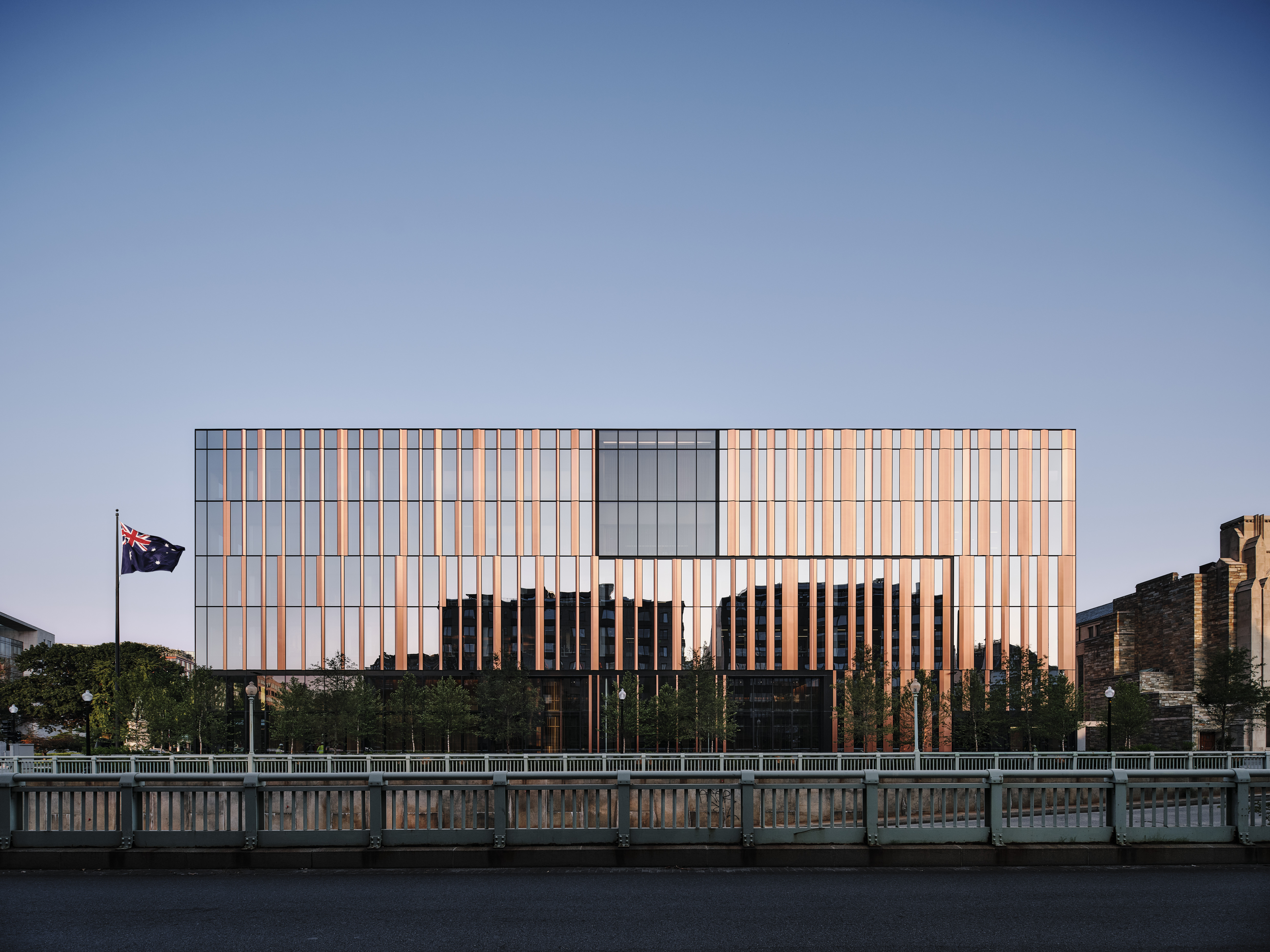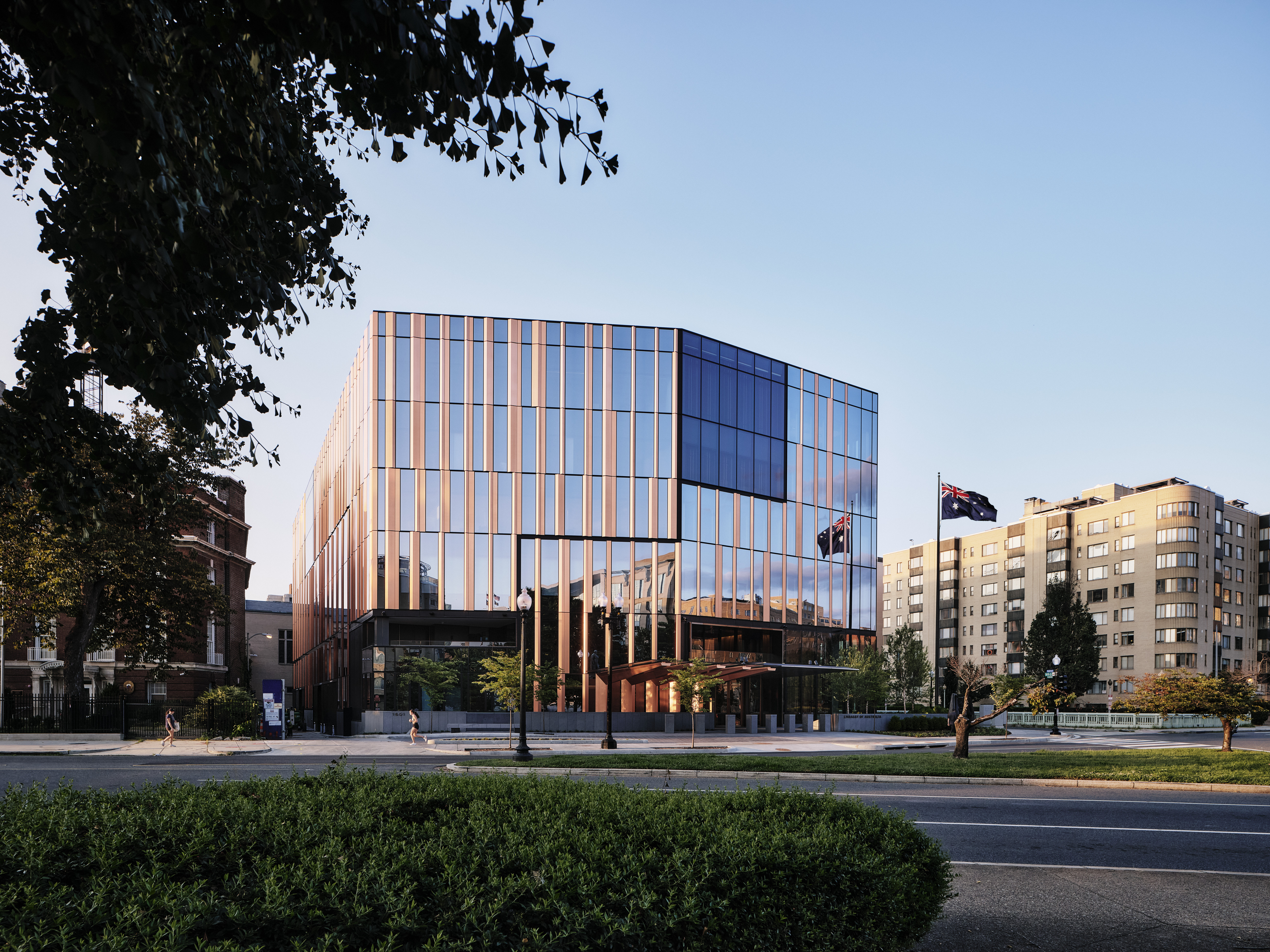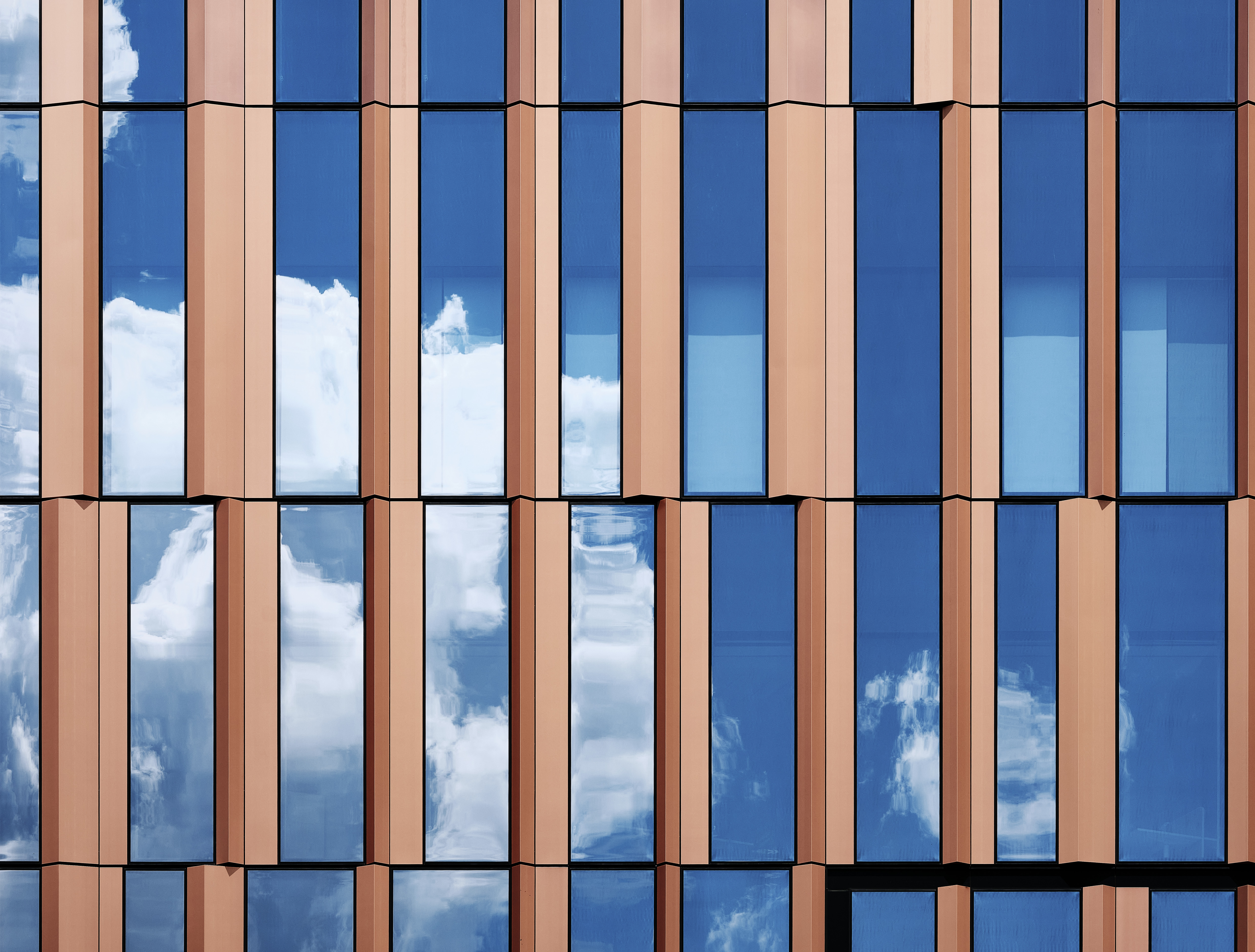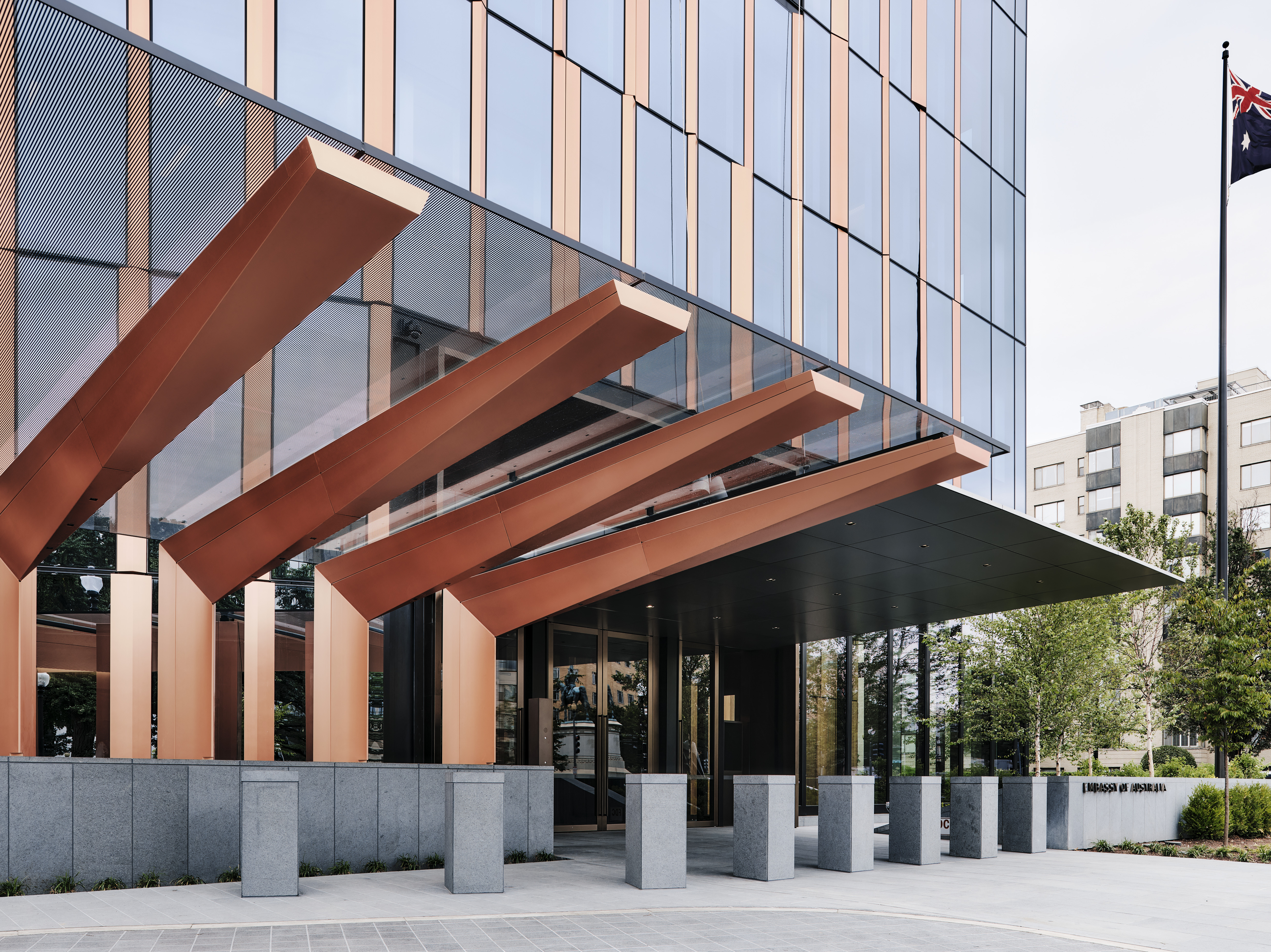Washington D.C.
New Construction
Architect
Bates SmartMelbourne, Victoria, Australia
Architect of Record
KCCTWashington D.C., Washington
Copper Fabrication
POHL Metal Systems GMBHWest Valley City, Utah
Facade Contractor
Enclos CorpEagan, Minnesota
Australia’s iconic landscape inspired the monolithic form of the new Embassy of Australia, capturing the essence of a vast and ancient continent inhabited by the world’s oldest continuous living culture. The project team made a conscious effort to reflect an honesty of expression in the selection of all materials. The design uses a combination of angled copper cladding and extensive glazing to create a dynamic and engaging feeling of Australia that also respects the building’s Washington, D.C., context.
A series of folded copper rainscreen panels fall in a defined pattern across the façade, allowing increased insulation at each copper panel location. The distribution of the copper façade panels changes from south to north and east to west. The team placed panels along the southern elevation in a more open configuration that relates to neighboring civic and commercial areas. To the north, they arranged the panels more densely to provide separation from adjacent residences and a church.
The appearance of the building exterior changes depending on the perspective of the viewer. This effect evokes the ways in which sunlight moves across the Australian landscape, creating constant variations of color and shade. Copper panels of assorted sizes and folds establish an interplay of shadows and reflected light that changes as sunlight moves across the building. Large shadow-line joints evoke a tectonic shift among a series of aggregated forms, establishing a dialogue between positive and negative space. The team used high-performance glazing to give occupants access to natural daylight while also managing solar gain.
The embassy’s overall design promotes an enduring vision of a contemporary and innovative Australia, with materiality and light helping express the country’s relationship with its unique landscape.




